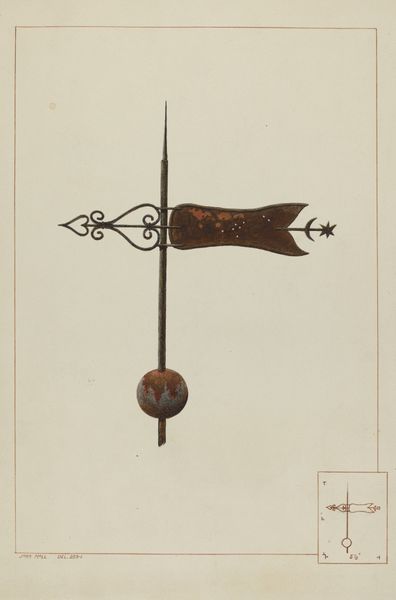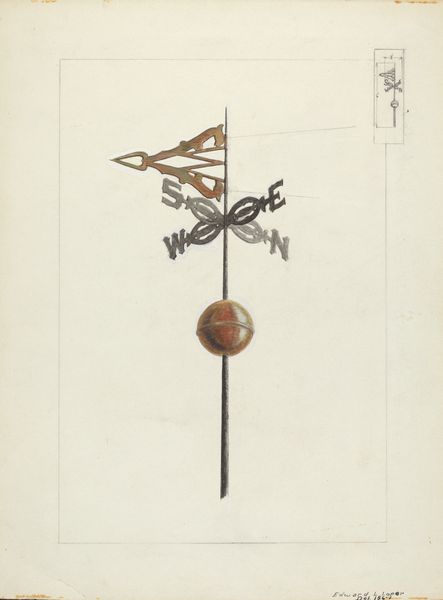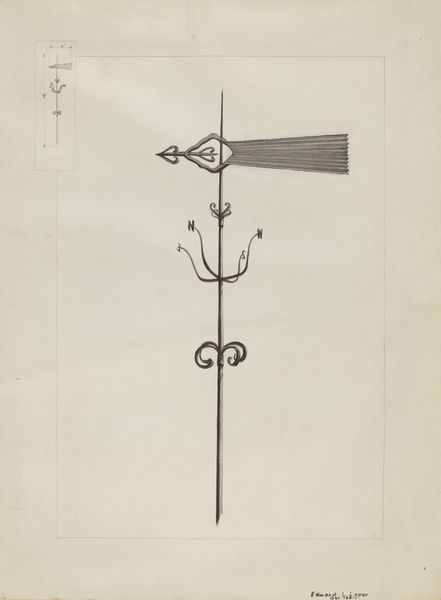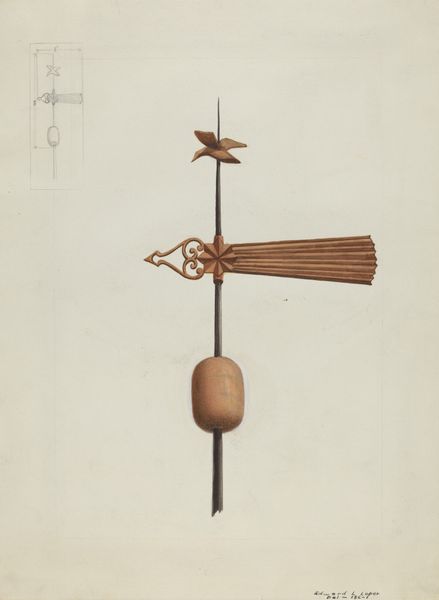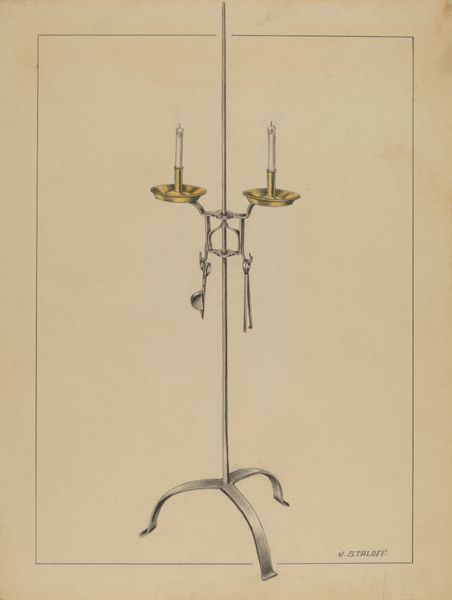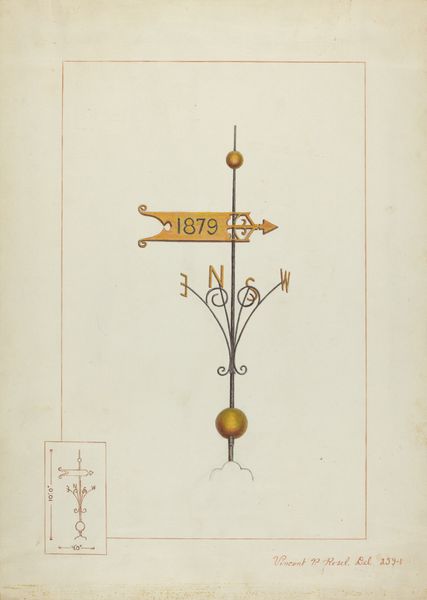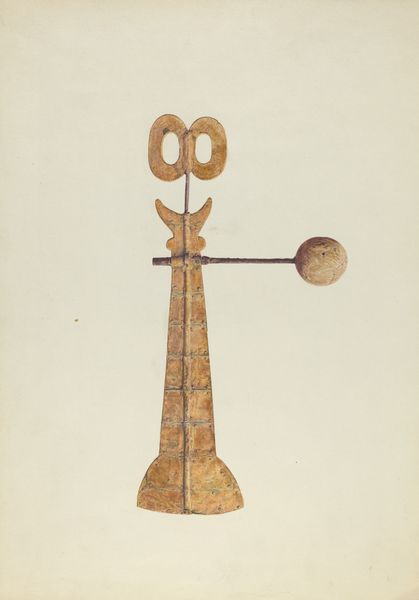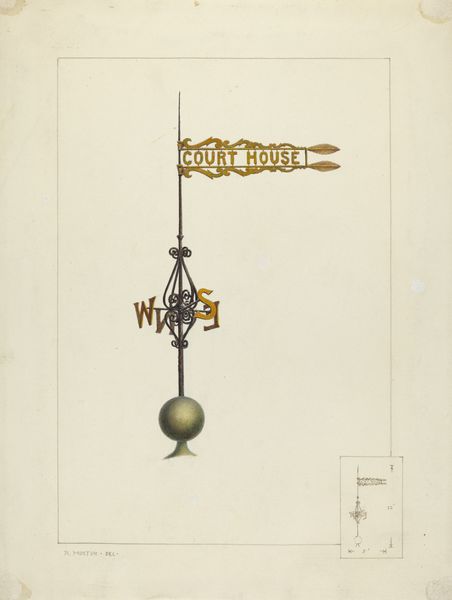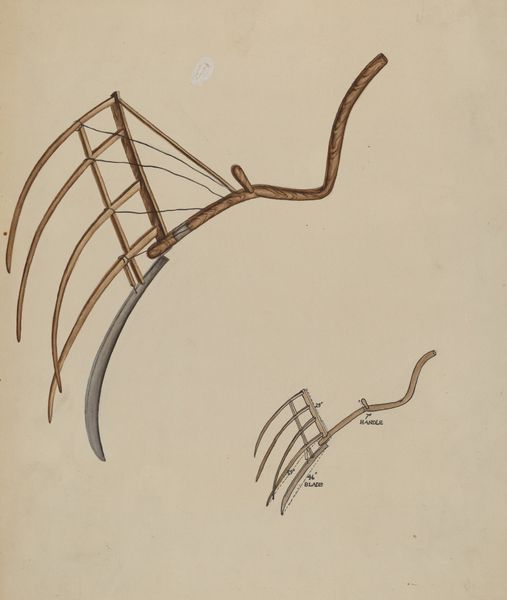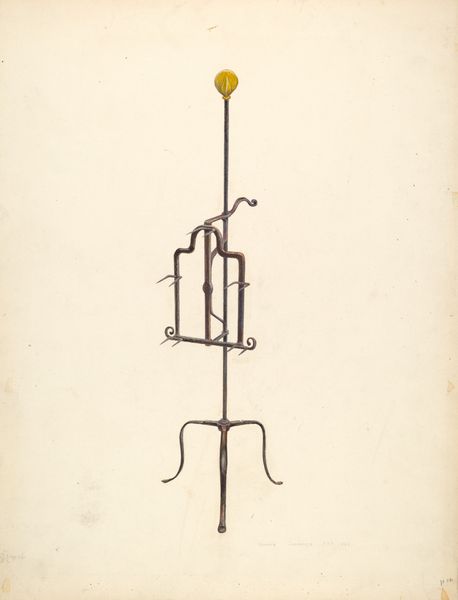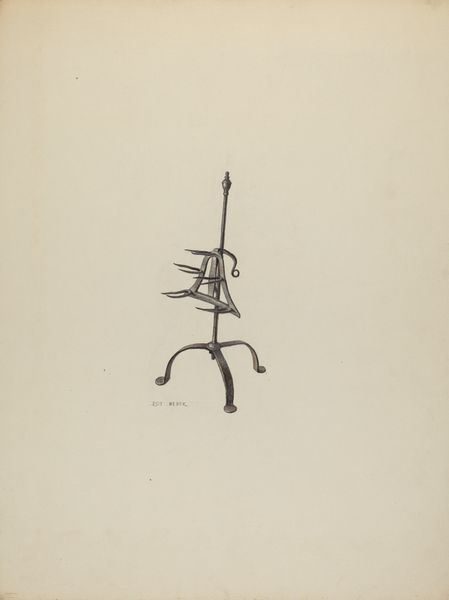
drawing, mixed-media, watercolor, pencil
#
drawing
#
mixed-media
#
water colours
#
watercolor
#
pencil
#
watercolour illustration
#
academic-art
#
decorative-art
#
watercolor
Dimensions: overall: 30.5 x 23 cm (12 x 9 1/16 in.) Original IAD Object: 108" high; 66" wide
Copyright: National Gallery of Art: CC0 1.0
Curator: This mixed-media work, "Weather Vane," by Ernest A. Towers, Jr., dating from around 1938, presents a technical drawing executed in watercolor and pencil. What are your immediate impressions? Editor: There's a wonderful stillness to it. The precise rendering of the metalwork, and that almost-patinated, rusted-effect color gives it the feel of an object recovered or prepared carefully for archival purposes. It's got a subdued feeling overall. Curator: It does have that preservationist aura. Looking at it through the lens of labor and the artistic process, you see a craft deeply interwoven with daily life. We often think of weather vanes as utilitarian objects, essential to agriculture and seafaring, rendered beautifully. Consider the social status implied—who commissions such objects? Whose labor fashions them? Editor: Absolutely, the social context is implicit in the very materiality. It isn't merely decorative; it signals something about the building it adorns, or the patron commissioning it. Is it purely aesthetic, or is it functional repurposed, hinting at sustainability and resourcefulness depending on its time? And Towers documented it meticulously—preserving not just an object but a facet of industrial-age life and design. Curator: Exactly. Think about how the vane’s position, its orientation in relation to the wind, directly impacts human decisions about labor—when to plant, when to sail. This is indigenous knowledge formalized through both artistic representation and practical tool design. Also, to what extent might gender roles in crafts and the design of such weathervanes impact both art and labor history in America? It would be a fascinating space for future interdisciplinary study. Editor: I'm drawn to its materiality beyond utility: what's the cost of its creation and distribution. And on paper, there's an irony too. This piece of equipment shows us our environment when the rendering has become its own kind of environment as well. It shifts our attention to the layers embedded within even simple weather devices. Curator: That layering is key. I'm seeing beyond weather itself now. It becomes a commentary on human impact, on cultural relationships with land, and on systems of knowledge passed down through labor itself. Editor: A fresh look at the materials reveals an expanded history. Curator: Precisely, an ever-evolving narrative.
Comments
No comments
Be the first to comment and join the conversation on the ultimate creative platform.
